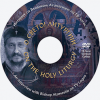Још од раног детињства, Тијана је показивала изузетну склоност ка музици, касније је одредивши као свој животни пут. Као дете је певала на школским приредбама, а док је похађала средњу школу, била је члан хип хоп и денс групе Chess, са којом је снимила неколико демо песама. Почетком своје професионалне музичке каријере сматра 2001. годину, када је упознала Владу Георгиева и почела да наступа са његовим бендом као пратећи вокал.
Паралелно са тим ангажманом, оснива алтернативни бенд Shanene, који је убрзо постао један од водећих на клупској сцени. Од 2001. године, сарађивала је са бројним познатим музичарима и извођачима на домаћој музичкој и јавној сцени као пратећи вокал за потребе снимања студијских албума. Тренутно живи и ради у Бостону, САД.
Њено прво учешће као самосталног солисте био је на Беовизији 2009, када се представила са еуропоп песмом Пази шта радиш. У полуфиналној вечери, од 20 песама, заузела је 17. место и није се пласирала у финалну селекцију. Шансу да ступи на евровизијску сцену стекла је као пратећи вокал Данице Радојчић-Нине на Песми Евровизије 2011.
27. фебруара 2017, уредници Музичке редакције РТС-а донели су одлуку да ће Тијана представљати Србију на Песми Евровизије 2017. у Кијеву (Украјина) са песмом „In Too Deep”.
Извор: Википедија
Photo By Mykola Swarnyk - Сопствено дело, CC BY-SA 3.0, Веза






